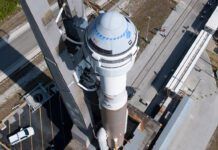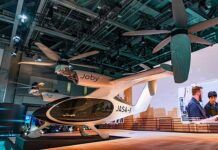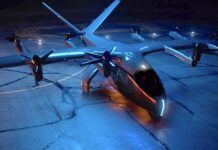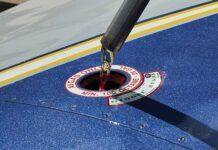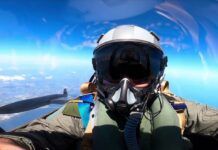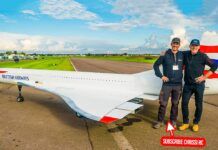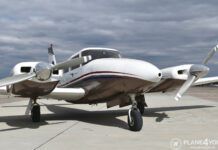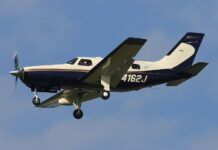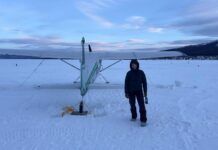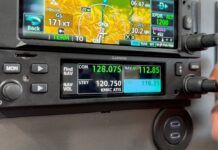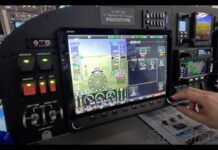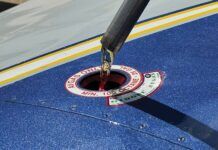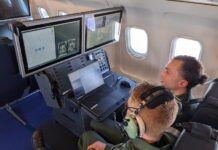I came, I saw, I flew. After three years of trying, frustrated by weather, schedules and airplanes that just weren’t ready, I flew my first electric airplane this week, Pipistrel’s Alpha Electro. And? From the inside the cabin, it was underwhelming. Listening to it whistle by on the ground was quite another thing, however.
As we’ve reported, Pipistrel announced the Alpha Electro at Aero Friedrichshafen in April, hoping for actual deliveries of real electric airplanes later this year or sometime next. The Alpha Electro is a conversion of the company’s otherwise Rotax-powered trainer that’s a popular seller. Pipistrel worked with Siemens to develop the airplane’s brushless DC motor and inverter package; it developed its own battery technology in-house and having looked over what’s involved in doing that — making it work and making it safe — I’m beginning to get a sense of how difficult it will be for companies to industrialize this technology at a scale that can be profitable.
As for the Electro itself, it has about 120 kg of lithium polymer batteries evenly divided between a front compartment just behind the electric engine and a second located behind the cabin. The cells are arranged in three quick-change, removable boxes each weighing about 20 kg or about 44 pounds. The motor itself weighs a fraction of the battery weight, at about 11 kg for the power-generating part, plus the weight of the inverter system that’s basically a motor controller. The complexity of the additional technology to string together the batteries, the motor and the charging system is a bit more complex than there’s time and space to describe here, but Pipistrel deserves credit for investing in its development. Company founder Ivo Boscarol told me that none of this hardware exists as off-the-shelf product and the motor itself is actually the easy part. I can see why.
As for flying it, between rain showers and a developing Burja wind, demo pilot Nejc Faganelj and I flew two short hops, both with fully charged batteries. Pipistrel engineered the Electro to perform and behave identically to the gasoline-powered version and it does, with some exceptions. Because of its short legs, it’s intended to spend most of its time in the pattern, teaching students how to land and take off. You certainly can venture away from the airport, and we did, but you have to keep a sharp eye on the battery monitor, which tracks remaining energy. Pipistrel has said the Electro will have a one-hour duration, with 30 minutes in reserve. I don’t think it’s quite there yet, as least based on my flights. More on that in a moment.
What’s odd about it is that when you flip on the switches controlling everything, you’re basically ready to fly; no warm up and no run-up. Everything is more or less automatic. Pipistrel’s Tine Tomazic said at the Electric Aircraft Symposium in April that anyone expecting an electric airplane to be whisper quiet and smooth as glass will be disappointed. He’s right. Once the throttle is moved off the stop, which you can do instantly without fear of anything bad happening, the airplane feels and sounds indistinguishable from its gasoline stablemate. I didn’t measure the noise level, but it seems comparable to the Rotax; there’s still a little prop tip noise and the pulsing prop wash still hits the windshield and other parts of the airframe. That’s the underwhelming part, which Tomazic says Pipistrel is happy with because the Electro is supposed to integrate into a flight school setup with gasoline-powered airplanes for other training and cross-country work. Get out of the gas model and into electric and there’s little difference.
The Electro’s climb rate and cruise speed are comparable to the gasoline version and so is everything else, right down to the switch placement. In place of the Rotax version’s engine monitor, there’s a battery monitor system that tracks overall battery health and remaining energy in a lucid, easy-to-read display. For our first flight, we did some landings and a low-altitude tour of Ajdovscina, Slovenia, where Pipistrel is based. Twenty one minutes of flight left 51 percent of remaining battery capacity, according to the monitor. On our second flight, we stuck to pattern work, which Faganelj said has delivered the full hour of endurance with a small reserve. But it wouldn’t have on the day I flew. After nine landings and about 30 minutes in bumpy boreal winds, battery capacity was down to around 40 percent. Then it occurred to me that obsessing about the promised hour is somewhat beside the point. After 10 touch and goes, the typical student will be ready for a break or the end of the lesson and the Electro is probably capable of 15 or 16, with adequate reserve, albeit probably not 30 minutes. If it’s meant to be a landing trainer, it has sufficient endurance to do that.
Then came the real eye opener. I got out of the airplane and Faganelj spent eight minutes beating up the well-manicured runway with high power passes, a couple of which were 10 feet over my head. The airplane isn’t quite perfectly silent as perceived from the ground, but it’s close. You don’t hear much of anything but a whoosh as it passes overhead with just a hint of prop tip noise. Pipistrel says the measured flyby noised is about 54 db, about the noise level in a typical office with AC running. Flyby noise isn’t much of an issue in the U.S. and even in some parts of Europe, but in Germany and northern Europe it is. I suspect on that count alone, the Electro will get — and is getting — serious buyer attention. At the end of our landings — 10 total — and the flybys, total flight time was 38 minutes with 25 percent capacity remaining.
There were a couple of surprises about the Electro. For one, the engine is geared, not direct drive. That’s because the motor is adapted from another application that Boscarol says he wasn’t at liberty to describe. I suspect it’s automotive, however. Future iterations of the motor for this airplane will be direct drive, which means the motor will be lighter yet. Second surprise: It’s water-cooled. Because the motor is so power dense and physically small, heat buildup is an issue, so it has a small circulating pump moving a glycol/water mixture through the engine. That means it has a cooling inlet and a radiator about the size of the oil cooler in a Rotax. Although cruise speed isn’t the Electro’s forte, Pipistrel still had to model the cowling to minimize cooling drag, so electric propulsion isn’t quite so divorced from the gasoline world as we might wish. Interestingly, when you flip on the motor switch, an electric pump comes along and that sounds just like a priming pump, but is in fact the circulation motor for the coolant.
Right now, the Electro is priced at about 100,000 Euros or $113,000 at current exchange rates. It would be less expensive but the motor currently costs as much as the rest of the airplane due to low-volume manufacturing. Boscarol says motor prices are expected to drop sharply as volume increases and he expects the Electro, or whatever model is the next iteration, to sell for about $80,000 Euros or the same as the gasoline model. Speaking of which, if we had made the same flight in the Rotax airplane, the fuel cost would have been about 23 Euro or $26 at typical European fuel prices. In the Electro, the freight was 2 Euro or $2.26 at Slovenian kwh rates. The dedicated smart charger the airplane is equipped with provides this information during the two-hour charge cycle. In the U.S., the gasoline/electric Delta would be less due to cheaper gas in the U.S., but the electric airplane would still be cheaper. Later on, I’ll post the full-up numbers including battery replacement costs; at a glance, they’re comparable to Rotax overhaul costs.
For the time being, the Electro isn’t a player for the U.S. market because the FARs don’t define a light sport/ASTM-type airplane as being electric powered and Pipistrel doesn’t seem to be looking at a primary category certification. Further, it wouldn’t be competitive with a Cessna 152 beater running on avgas simply because the Cessna is cheaper to buy. The Electro is, not unsurprisingly, getting a lot of attention in Europe where it will be significantly cheaper to operate and quieter, which matters. The looming unknown is this: Can a flight school integrate into its operation an airplane that may do only one thing, teach takeoffs and landings? And can it do so profitably? And how will students take to flying an electric airplane, which represents the bleeding edge of what electric propulsion technology can do? The fact is, Siemens is still tweaking the motor technology and there’s not much competition yet. But it will come. Similarly, Pipistrel is seriously on the edge in developing advanced battery management technology and I suspect the next iteration of this equipment won’t be long in coming. I was shown some research that leads me believe Pipistrel is further along than many might imagine.
To judge the Electro fairly, we’ll have to see how it performs in the environment it’s intended for: flight school training. In my view, there’s a sufficient early adopter market to make Pipistrel’s investment worth the effort. Whether it proves a hit or not, I have to say I’m impressed with the technical creativity Pipistrel applied to this airplane. If electric flight has legs — and Boscarol is convinced that it does — Pipistrel won’t be caught at the trailing edge of it.


